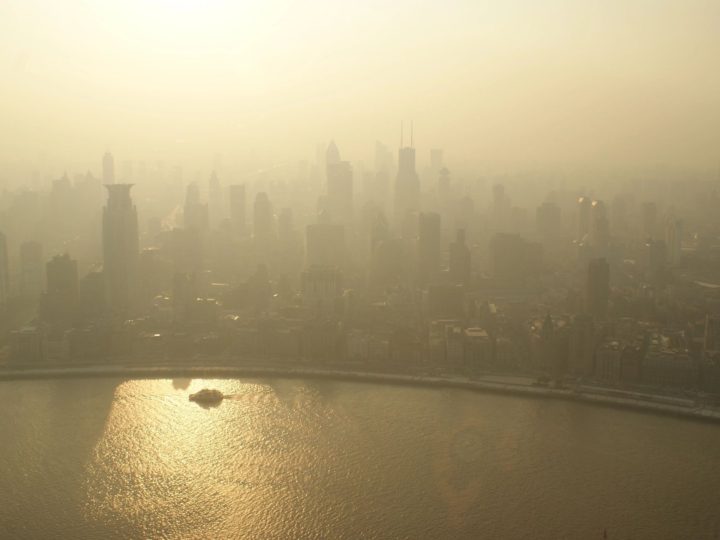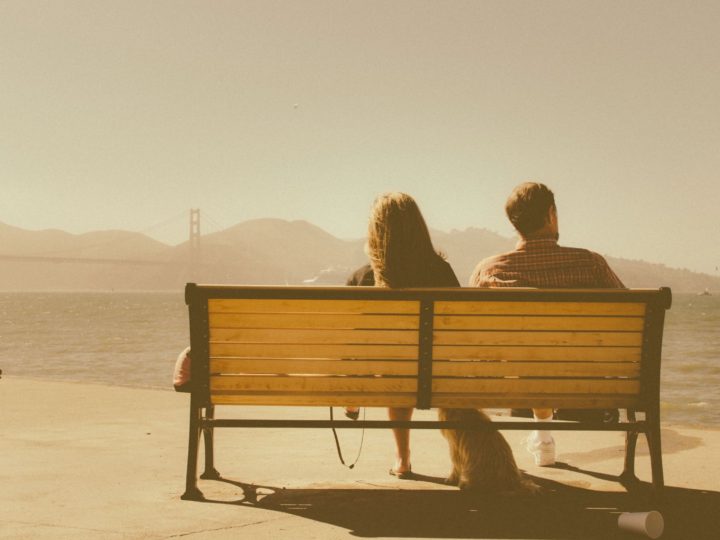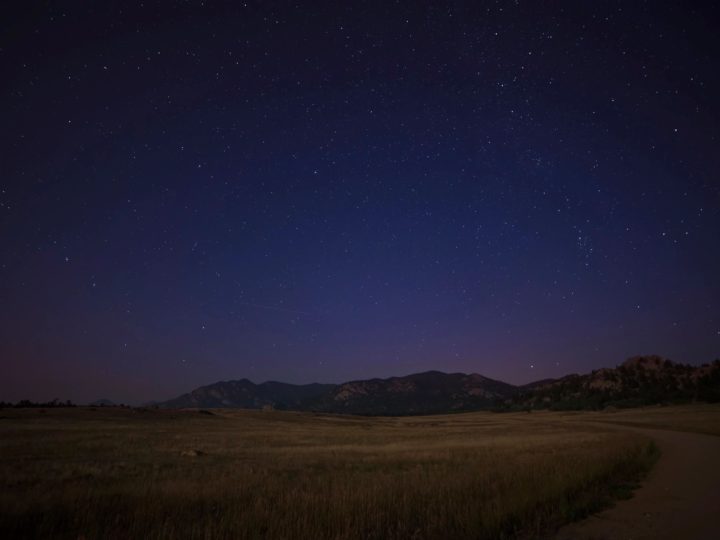
This is Part 2 of a 3 Part Series on “Burning Man as Spiritual Teacher” by Adam Gilad. Adam is an Emmy-Nominated producer and author and leader whose teaches how to awaken through freedom into love.)
2. We Need Ritual: on Pilgrimage and Carnivale
I’m not a fan of organized religion.
And this is from a guy who spent 2/12 years in Jerusalem, several months in Ashrams and Monasteries in India, and has thousands of graduate and teaching hours deep in religious and sacred studies.
There is great and necessary wisdom in all the great religious traditions, but always astride unnecessary dogma, nonsense and murderous tomfoolery. Each of the “great” religions is befouled by long, ugly histories of blood and hatred, human division and demonization of “the other.”
As my favorite comic, Doug Stanhope says, “Here’s a headline you’ll never read: ‘Thousands Die as Agnostics Storm Athiest Stronghold.’”
And it’s sad, really, because there is so much beauty, generosity of spirit and love at the core of the lives of so many millions of good people in all the religious traditions. We are all, whether we like to admit it or not, inheritors of the best of these traditions, as well as the worst. And it feels a shame to throw out the luminous baby with the blood-drenched bathwater.
Especially because the impulse toward transcendent meaning and connection with the cycles of life has not abated in the human heart.
Burning Man is, in many ways, a new path for these perennial aspirations, a spiritual, if not a full-blown religious event.
How?
First, it is a way of connecting with community in a radically generous and heartful way. You become one pulsing connected being.
There is no money exchanged. It is a gift economy. You bring gifts to hand out – food or drinks or poems or artwork or massages or jokes or compliments or songs or, most amusingly, applause for your simple passing by, as a group of lawn-chair sitters offered.
Second, as the Jewish tradition might put it, the culture of Burning Man encourages you to “run to do a mitzvah,” or kindness for another and even for the land. In Islamic cultures, hospitality is often offered as a most sacred virtue. And I’m sure that Jesus fellow had a thing or two to say about kindness and generosity (though I believe it was Woody Allen who wrote in Hannah and Her Sisters, “If Jesus came back and saw what’s going on in his name, he’d never stop throwing up.”)
Jesus definitely would have come to Burning Man. In fact, I think I saw him a few times, tangoing by the art cars.
Third, Burning Man fulfills the ancient impulse for pilgrimage.
I owe this observation to my RV mate, author of Unique Self and The Mystery of Love, Dr. Marc Gafni. He observed that when you read the description of the early Israelite fall harvest pilgrimages to Jerusalem, you get a similar picture: long lines of pilgrims, juggling, drinking, rejoicing, dancing, offerings, cavorting aplenty.
And this a pilgrimage-as-honorific; if you’ve gone once, you’re officially a “burner” – just as a trip to Mecca at the appointed month makes you a “Haji.”
Listen, it’s no easy feat to make the Pilgrimage to Burning Man.
The Playa is an utterly arid, lifeless ancient sea-bed, prey to dust storms, white-outs, freezing rain, searing heat. Everything that’s brought in, must be brought out. “No trace left behind,” is a commandment of the festival – and after the 68,000 revelers vanish, indeed not a single scrap of human crap is left on this hushed and otherworldly plain.
But what makes Burning Man a unique Sacred Pilgrimage is that the sacred space is created by the pilgrimage itself.
No prophet ascended to heaven on horseback here (although some are likely to have ‘shroomed something similar). No one almost sacrificed his son on a rock here. No one overturned moneychangers’ tables. No Holy Face appeared on a potato chip or cried blood tears from a Play-doh sculpture.
Which, in my book, is kind of awesome, and progress for humanity.
It is a step toward what Gafni calls “the democratization of enlightenment.” It dignifies the individual, not an imagined, spectral, otherworldly tyrant or His cast of magical characters.
The thing is, we, as humans, already do create sacred sites for ourselves. Real ones. In our gestures of love, in our memories of where we met our beloved, birthed our children, buried our parents, connected with the Source of Life – we generate places and markers in time that special, that are unlike the rest of this mini-mall plastic-scape, and which make our lives feel more meaningful, rich and connected.
Creating the sacred in our lives represents a deep honoring of the worth of our individual and unique stories, and our part in the unfolding story of love and consciousness in this universe.
I’m all for it.
And, although I’m not sure how “sacred” marriage is anymore in a world that offers Ashley Madison and weddings in Elvis chapels, it is fascinating to note that every year, more and more couples choose to tie the knot on the Playa, here amidst this unique community.
Let’s take this a step deeper…
Burning Man offers something even more interesting when it comes to pilgrimages…
Within the pilgrimage to Burning Man are at least three “mini-pilgrimages”…
(a) The Burning of the Man – this event is the culmination of the week, where the center structure of the sprawling insta-city is set aflame in a magnificent conflagration, umbrella’d under a battery of fireworks and ringed by nearly 70,000 people whooping and cheering. The walk out to the center of the Playa, with the anticipating thousands, in full, wild regalia is as mass and confluent moment as I’ve ever experienced.
When you reach the center, the “Man” is circled by scores of “art cars” like an Old-West circling of the wagons, except these glowing, pulsing, laser-festooned sand-ships blare every kind of music you can imagine – from dub-step to EDM to house to heavy metal to, most charmingly – a giant Victrola float, filling the air with 1920’s crooners! All one great jubilant cacophony, selah.
The collapse of the Man into the fire brings the greatest cheer, which struck me as sad at first, since, as a student of history, I am suspect of burnings – whether they be of live people, books, homes or cities.
But a subsequent discussion with the brilliant and noted writers Rachel Resnick and Justine Musk, with whom I shared this moment, revealed a deeper spiritual structure of immolation and resurrection…
Together, we were all marking a moment in time of the death of the old year, fully confident that next year the man will rise again, resurrected. How’s that for a religious metaphor?
And waddya know? Just in time for Rosh HaShanah.
And football season.
(b) The Burning of the Temple – on the night after the burn of the Man, the Temple is burned.
The Temple is always the most somber and affecting locus of every burn. Into a giant cathedral-like structure, burners file at all hours and post photos, shrines, scrawled messages and even artifacts (surfboards, shirts, framed wedding photos) of those who have died this past year. And in absolute antinomy to the pandemonium of the burning of the man, this final burn is witnessed in utter and absolute silence and reverence for those loved and lost.
(*note: I told the guy who wanted an epic marriage proposal – I mentioned him above – to propose to her in the Temple. If told him that if he wanted her to feel the gravitas of his devotion, tell her where the seriousness of life’s preciousness and brevity was screamingly clear – and make it clear that it is from that ground, that you want to intertwine your lives now until the end.)
(c) Finally, there is the Pilgrimage to the Deep Playa or “The Fence.” This pilgrimage takes you through untrodden drifts of sluggish sand and dust, far beyond the hullabaloo of the festival itself, where you stand at the outer perimeter.
On one side of you – the silent and sacred infinity of the funereal desert.
On the other side – music. Mayhem. Madness. Life thronging itself silly.
It’s an astonishing thing to teeter on the edge of these two realities in such starkness. Because, whether conscious or simmering just beneath the distraction of our daily reality, teeter we do. Moment-by-moment.
Until we are stepped away from the music and cross that fence once and for all.
The third way that Burning Man has taken on the mantle of a traditional religious or spiritual event is that it fulfills the near universal need for Carnivale. Most Western cultures have a Mardi Gras, a Purim, a Rio and Halloween, growing sexier by the year, is increasingly taking on the traditional role of the Carnivalesque, described by Russian literary theorist Mikhail Bakhtin as a necessary overturning of the social order – if only for a day or a week.
The Carnivalesque is a cultural necessity, a pressure valve that relieves people of the burden and injustice of the social order we have inherited from previous generations. The fool becomes the King (see the opening of Disney’s The Hunchback of Notre Dame for a scintillating and jarring refresher) and the King becomes a commoner.
It’s as if we all know that our social and sexual order is an arbitrary fiction and turning everything upside down in raucous celebration allows us to blow off steam – lest we explode in outraged revolution, or madness.
Bakhtin identified four indicators of the carnivalesque, and all are expressed at Burning Man…
(a) The Temporary Dissolution of Social Strata and Boundaries
In Carnivale, you have, as a break from castes and class, familiar and free interaction between people expressing themselves in utter freedom and, importantly, in unity. Indeed, at Burning Man, you have Silicon Valley en force (the CEO’s of Google, Zappos etc. are there), hippies, environmental engineers, bikers, artists and musicians, grandpas, students, revelers from every corner of the globe. Millionaires and minions, scientists and sorcerers, military veterans and peacenik vagabonds. Together as one.
(b) Rude, Scandalous and Absurd Behavior
Which is not merely accepted in carnivale, it is encouraged – and without consequences. So, for one week, two hours north of Reno – women wander topless, men air their kibbles and bits, hallucinogens are ingested aplenty, and if one knows where to look, orgiastic tents teem with intertwining hands and tongues and fingers and naughty bits of every shape and size. This is a live canvas where you can test your edges and explore fantasies and the corners of your personality frowned upon by the Human Resources Dept. at your damnable schoolmarm corporation. Here, there is no pressure or regulations – only opportunity to create or recreate oneself.
(c) Carnivalistic Misalliances
In Carnivale, everything that may normally be separated, is allowed to reunite – Heaven and Hell, youth and age, the divine and the shadow of the divine.
Cycling across the vast Playa, you are likely to run into winged angels and Dionysian, horned pan-demons. You will find sacred yoga camps and Irish bars where the beer and whisky springs never run dry. You will pass marching bands and classical pianists on rolling floats. You can attend Catholic Mass or Shabbat services and perform pagan rituals to the goddess or the spirits.
(d) Sacrilege is Sacred
Carnivale allows us to defy religious order and dogma without punishment (again, I think it expresses the buried universal suspicion that power-calcifying religious order is at least, in part, self-serving fictional horsesh*t).
And indeed, as in most expressions of carnivale – you get creative theatrical expressions at Burning Man where the sensual steps out of the shadows of society’s wagging finger and into the light, where women seize the phallic scepter of power, and where adults indulge in the free, unashamed play of children. Indeed, you’ll see men dressed in diapers and bonnets, adults splashing naked in foam baths and all manner of slides and swings and nude Twister and giddy, unsupervised release.
I have written elsewhere that sexual shame is worse than racism, for while both are socially taught and unnatural to children, the latter teaches hatred of the other, while the former teaches shame of one’s own body. F*ck sexual shame. It has caused so much human misery. I have seen the deep-cut scars up close and personal with so many of my readers and coaching clients.
Let us replace sexual shame with sexual reverence! Different game. Different results. Different world.
[side note: to see my corrective to sexual shame and a comprehensive doorway into healthy sexual expression, go look at www.DreamLoverBooks.com]
Bakhtin would have reveled at Burning Man as it so to the tee fulfills his description of the simultaneous and tolerant “jolly relativity” of all things, the harmonic music of alternative voices expressing themselves, the lack of any one voice pushing for a privileged or tyrannical or hegemonic authority, and by the intermingling of high-purpose with pure ludic silliness, of high culture with the ruddy, carnal profane.
Festival culture is beginning to seep into “default” culture. Within two days of my return, I saw a Burning Man tableau during a Doritos commercial, of all things. And Jon Stewart make a reference during his evening broadcast.
Intentional community. A sharing economy. Wild celebration free of happenchance social constrictions. Marking the passage of life and death, of love and autolysis. These are all significant springboards for self-discovery and self-rejuvenation. To learn more, there is a fascinating ongoing documentary project about festival culture which can be found at www.TheBloomProject.com
3: People Need to Play
Personally, I never bought into “the Protestant work ethic” – though, I sure as hell enjoy its benefits – cars, iPhones, air conditioning, hot water heaters, the salad bar at Whole Foods.
But the idea that hard work will keep your soul pure and get you into the expensive seats in heaven always seemed to me like a grifter’s con – and like an only slightly less sinister version of “arbeit macht frei.”
Yes, long hours at hard work may keep people “out of trouble,” but it also keeps them out of self-expression and discovery. Which, in my book, is the point of having a conscious life.
Oh, and let’s remember, it keeps the serfs and proles wage-slaving their surplus value over to those in power, and, presto-chango – they are grateful to do it because God said it was a good idea. Our friend Karl Marx had something useful to say about this, though, as so often, he was more insightful in his analysis than in his solutions.
So let’s have a spiritual sit-down for a second here, you and me…
What is this obsession we have in our culture about work? Do you need it? Do you want it?
Ever since I was a small child, picking my way along the rushing streams and dells of the Hudson River Valley, life has, to me, seemed vastly too precious, multifarious, sexy, vital, sublime and fascinating to spend in an office park or a business suit.
And yet, in so many ways, we define ourselves by our “work” – as Homo Faber – “Man Who Makes” (i.e. fabricates). Or as Homo Sapiens Sapiens “Man Who Thinks About Thinking” (a definition, I should mention, created by eggheads!)
No thanks!
There is a whole other way of looking at our essence – most notably sketched out by the early 20th Century Dutch theorist Huizinga – as “Homo Ludens” or as “Man Who Plays.”
Why shouldn’t that define who we are?
Let me ask you…
Can you consider for a moment that we were born to play?
Have you ever watched a child create a game out of a stick, a Cheerio, a finger on the lips? Have you noticed how overworked men yearn to get close to games and sports?
And what is flirtation, after all, but play?
To what do we return, if we can afford it, when we hang up our professional lives and face our remaining time on Earth?
Play.
Play is delight in being alive.
Which is as lovely a definition of “the sacred” as I can imagine.
I can imagine an entirely different evolution of culture where play, not work, is valorized – and I would be the first to sign up for an entry ticket.
With fingerpaint, naturally.
I sometimes call Burning Man, “recess for adults.”
It’s a chance to let go. To play. To delight. To dance. To create. To be enchanted by all the silliness, the sudden marching bands, the bunny parades, the bumblebee flashmobs where they “buzz” you frantically and hilariously.
We play as we played as children, for its own sake, and are refreshed.
And of course there is the more concupiscent play of sexuality – the bared bodies, the writhing dancing, the hooking-up. Another kind of play. Another kind of delight.
And the freedom, for one week, to indulge in your freedom as a human being to indulge.
Coming Soon: Part III: Self, Society, Spirit
Photo Credit: yoganonymous.com
About The Author:
To get Adam’s free and unique entertaining newsletter on how to create love, boldness and freedom in your life, please go to www.AdamGilad.com

An veteran of Indian ashrams, Nepali and American Buddhist monasteries, Peruvian jungle medicine journeys and advanced Jewish study in the heart of Old Jerusalem, #1 Best Selling Amazon author Adam Gilad invites his readers into conjuring a robust life of passion, authenticity, daring and, ultimately, deeply fulfilling relationships with themselves, their lovers and the wonder of life. A Stanford Graduate Humanities Center Research Fellow, Emmy-nominated Executive Producer and former co-owner and on-air host of National Lampoon Radio, Adam enjoys exploring the world as an entrepreneur, father, writer and spiritual adventurer. Adam brings together a unique mix of global wisdom traditions, spiritual cheekiness, advanced education and expansive practices that has attracted a following of over 50,000 in the dating and relationship world. He has authored countless audio trainings and created several programs, ranging from learning the “language” of the other gender, cultivating a dance of the sexes rather than a battle, playing the spectrum of sexual polarity and always, always, always, opening to fearlessness in self-awareness, self-evolution, compassion, forgiveness and really good wine. He is the father of two grown sons, who have taught him more than all the above, combined. Learn more and subscribe to his uniquely provocative online newsletter on how to create a life of bold love at www.AdamGilad.com and http://dreamloverbooks.com/
– See more at: http://themastershift.com/7-spiritual-lessons-from-my-week-at-burning-man-part-i/#sthash.InuJjIbQ.dpuf




